transport layer protocol role
Role of Transport Layer Protocols
The role of the protocol below the network layer is simply to deliver the disjointed packets (parcels) to the destination. It doesn’t care what data is in the packets it sends. All you have to do is deliver it to the person you specified.
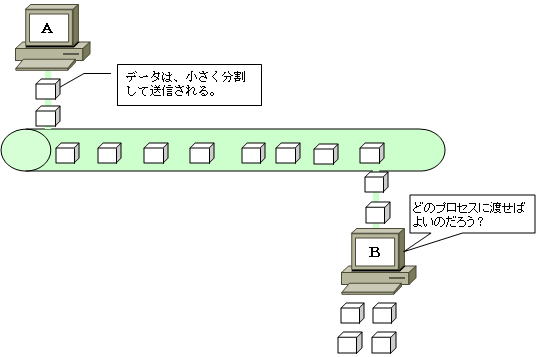
However, from the perspective of the process (application), that would be a problem. If you don’t know what the contents of the data are, you don’t know if you are in charge of the data.
There are many processes running on your computer.
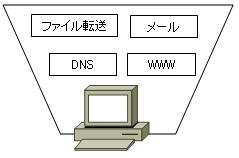
Even if the packet is received, there is no information to reassemble the disjointed packet, so if you can’t put it back together, you don’t know if all the packets you need have arrived at you. .
Therefore, the transport layer provides the process with the state that “A and B are connected, and the process on A and the process on B can communicate.”
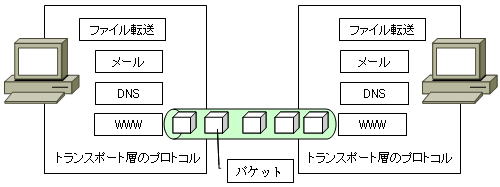
The transport layer protocol secures the data transmission path with the other process.
Role of port numbers
Multiple processes are running on your computer at the same time. Therefore, a mechanism to distinguish between multiple services is required.
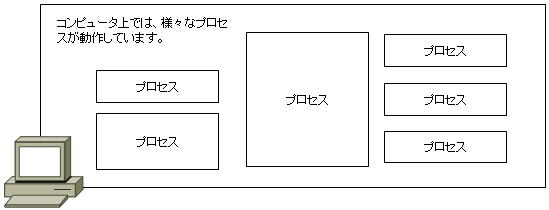
The transport layer uses port numbers to identify services. A unique port number is assigned to each process.
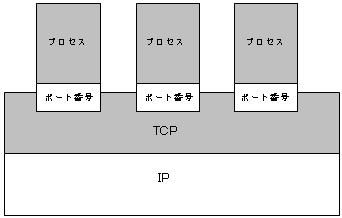
This allows you to set multiple links.
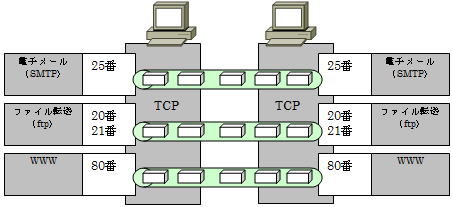
In general, IP communication uses TCP or UDP as the transport layer protocol.
Those protocols have a 16-bit data field as a port number, expressed as “0 to 65,535”. This port number is logically set for each protocol.
Even if the port number is the same value for TCP and UDP, it is completely different. However, it is okay to use the same number. For example, DNS uses port number 53 for both TCP and UDP.
A typical port number for TCP is as follows.
| port number | Service name |
| 20 | ftp-data |
| twenty one | FTP |
| twenty two | ssh |
| twenty three | telnet |
| twenty five | smtp |
| 53 | domain |
| 80 | www-http |
| 110 | pop3 |
| one two three | ntp |
| 443 | https |
well known port
Port numbers are not freely assigned by transport layer protocols.
Port numbers are roughly divided into three as follows.
| type | port number | Meaning of port number |
| ①Well Known Port | 0 to 1,023 | It is a general port number reserved port, and cannot be used freely because it is centrally managed by IANA, which manages IP addresses. Used by highly public and useful services. |
| ②Registered Port | 1,024 to 49,151 | Registered Port Numbers Reserved for specific services. Even if it is reserved, the user can use it freely. |
| ③Dynamicprivate Port | 49,152 to 65,535 | Port numbers that can be used freely Ports that are used dynamically by the OS temporarily during communication, and are released when communication ends. Also known as an ephemeral port. |
There is a pre-determined port number called a well-known port. It is assigned to protocols that are highly public or useful.
For example, TCP ports 20 and 21 are used by ftp, port number 80 is used by WWW, and other processes are not used.
Other than these reserved port numbers, various processes can be used, and each time a number that does not overlap with other processes is dynamically assigned.
Network layer/transport layer protocol
Transport layer/network layer protocols include:
| network layer protocol | transport layer protocol |
| IP, ARP, RARP, ICMP, DHCP, IPX, NetBEUI, DDP, AARP | TCP, UDP, SPX, NetBEUI, RTMP, AURP, NBP, ATP, AEP |
In general, LAN uses TCP/IP for communication, but NetBEUI, IPX/SPX, etc. exist in the same layer protocol. The layers in which these protocols exist correspond to the network and transport layers in the OSI reference model.
This layer is primarily responsible for identifying communication partners and services.
Different protocols have different rules for identifying communication partners and services.
in short
Such communication does not work.
*It is possible if the gateway mediates the communication.
In communications, the first thing to consider is the OSI 7-layer model. Protocols in the same hierarchy for source and destination must be the same.
The work done in communication is far more than what appears on the surface, and the protocols of each layer are closely connected and work to realize a single communication service.


